October 15, 2015
Superposition at Carriageworks
Along with two friends I recently attended a performance entitled Superposition at Carriageworks in Sydney. Walking into the theatre, being handed earplugs and sitting down not knowing what to expect the room went black.
What followed was a strange mix performance featuring data and sound, building at points to climactic crescendos. Black and white data was displayed on three different screen displays, closest to us were 10 computer screens spaced roughly one metre apart. Behind this and slightly above was a screen around one meter tall stretching the full width of the lower displays. The final screen was like a small movie cinema against the back wall. Each of these displays were used in different ways, sometimes they worked in concert to dramatic effect. In front of the last display was a table with chairs.
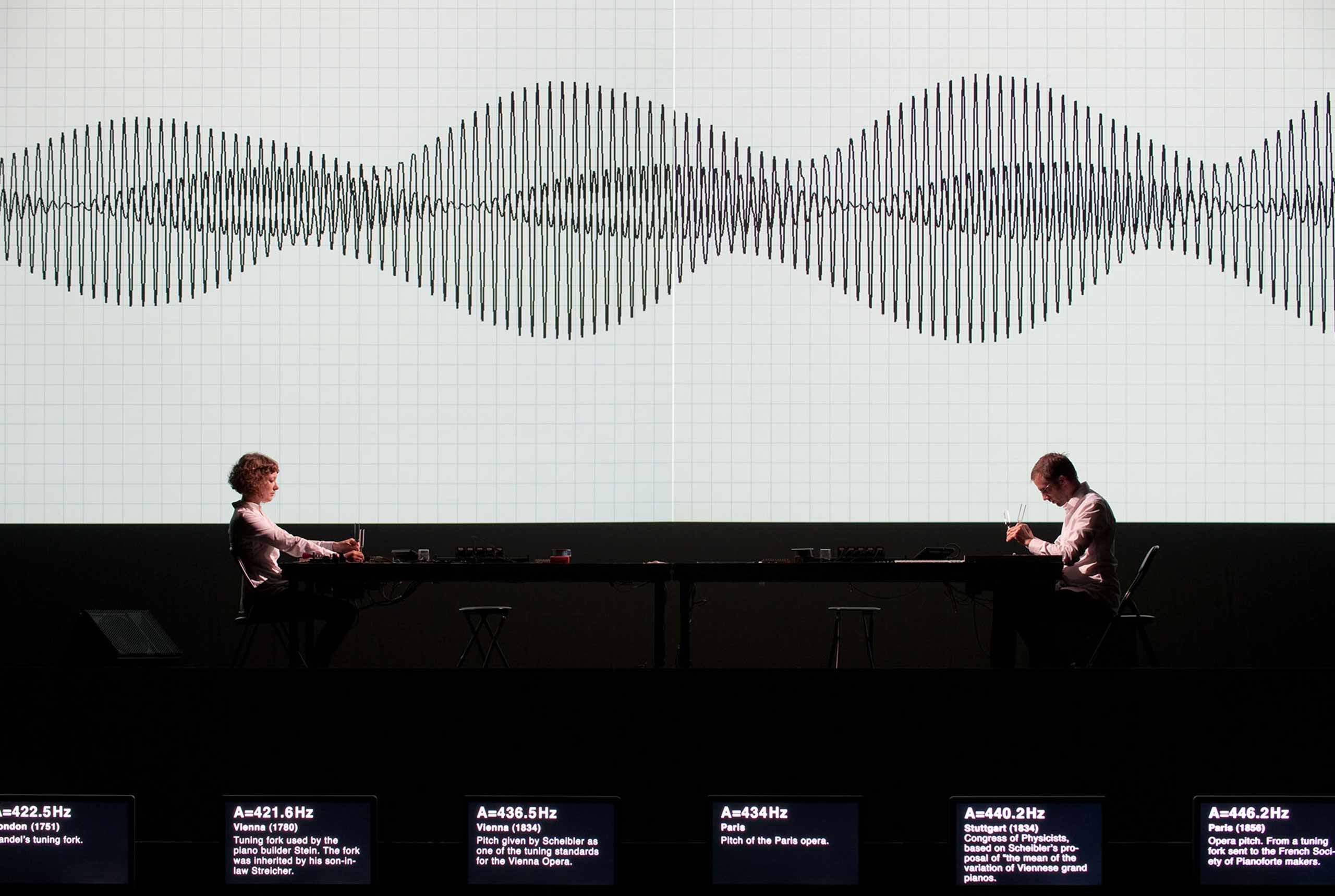
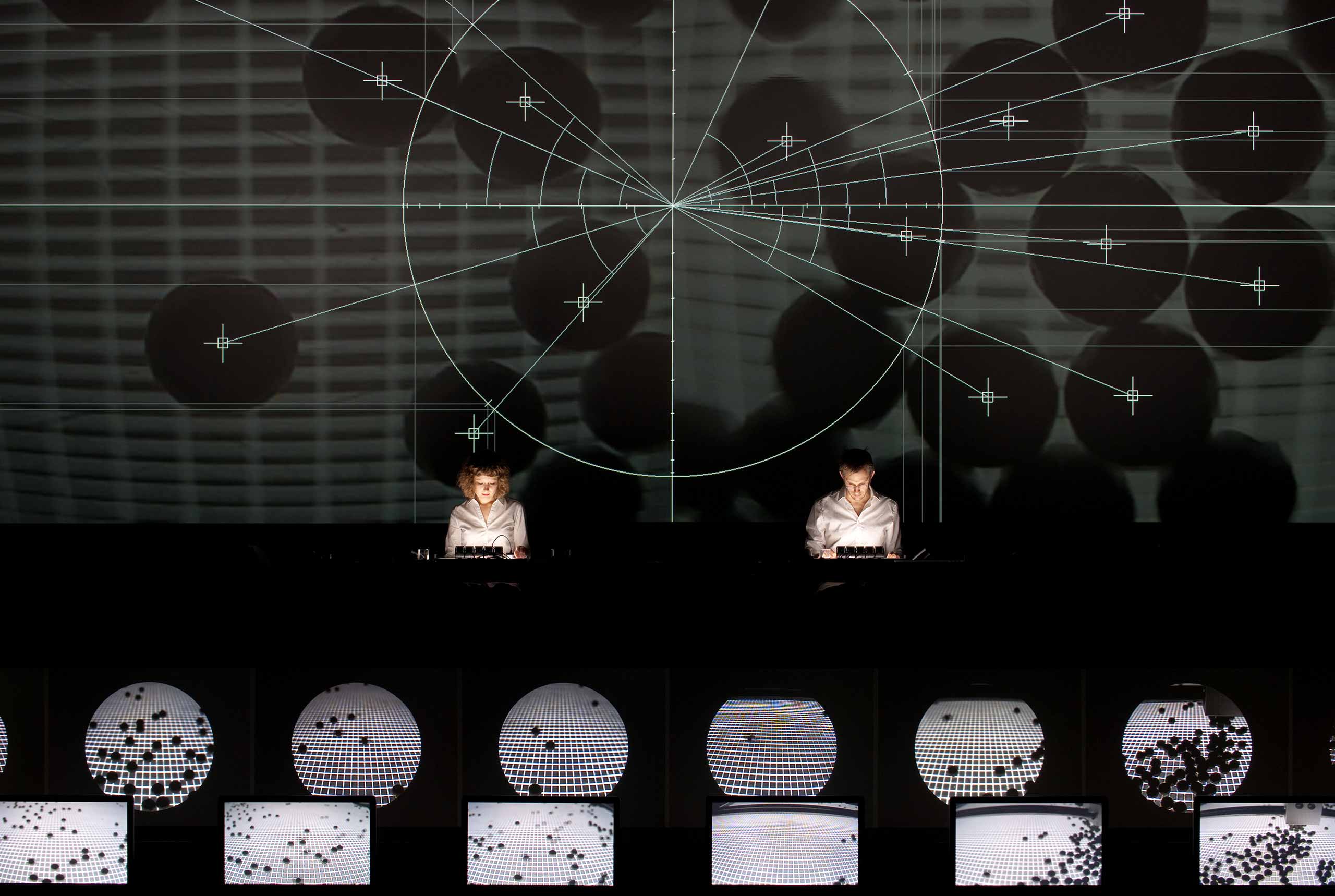
Above: Images from the Superposition performance © Ryoji Ikeda.
The piece was set in different parts, almost like an album. A male and female performer entered the stage and performed tasks in a scientific emotionless manor at the table. Ranging from tuning fork sounding, Morse code typing, cryptic crossword solving and rolling small ball bearings the pairs actions were both creating the sounds and visuals for the piece while also prompting responses from the work.
The effect of being immersed in this sterile data heavy experience naturally raises questions of the relationship between humanity and technology. The starkness of the mostly black and white work and the scientific and political overtones leaves a cold and empty feeling.
Above: Video of various parts of the performance © Ryoji Ikeda.
Below: Stills from Superposition © Ryoji Ikeda.
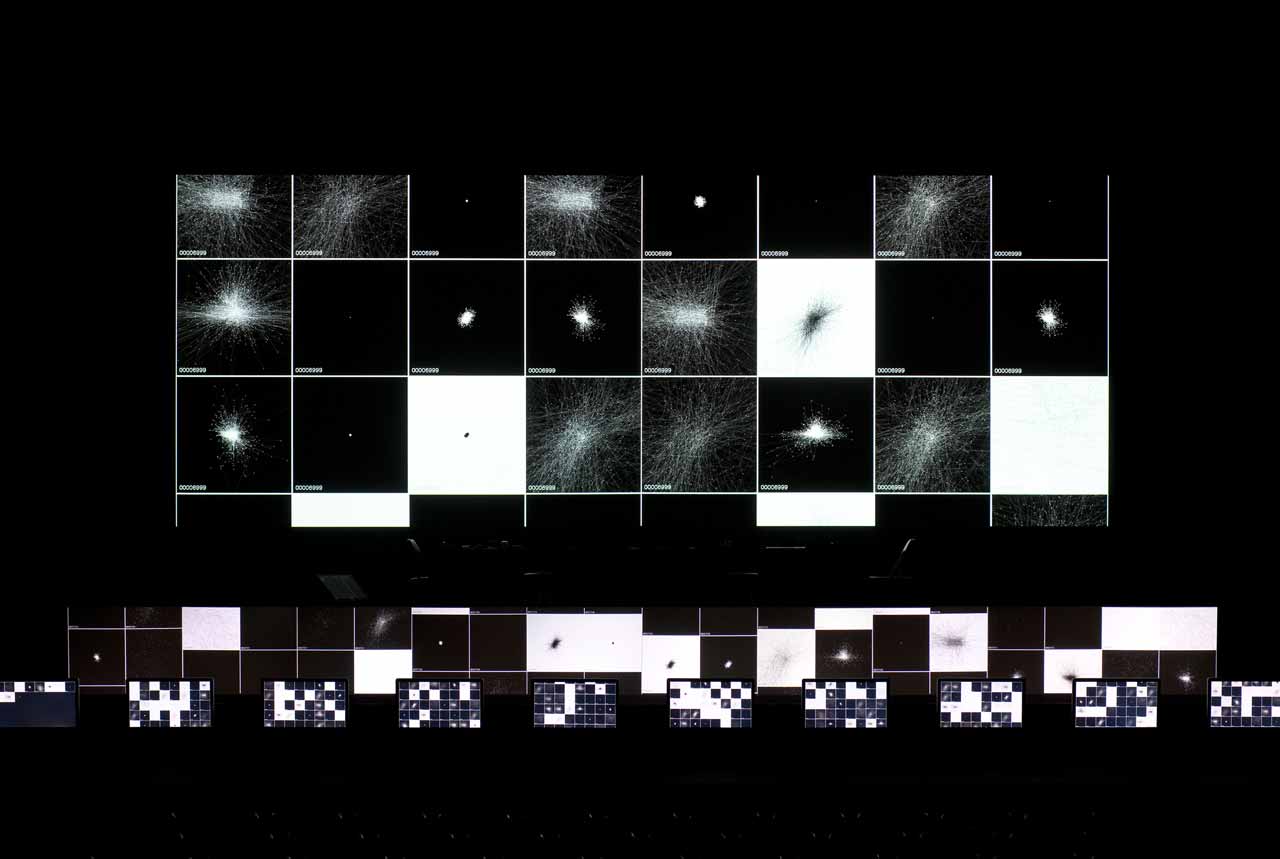
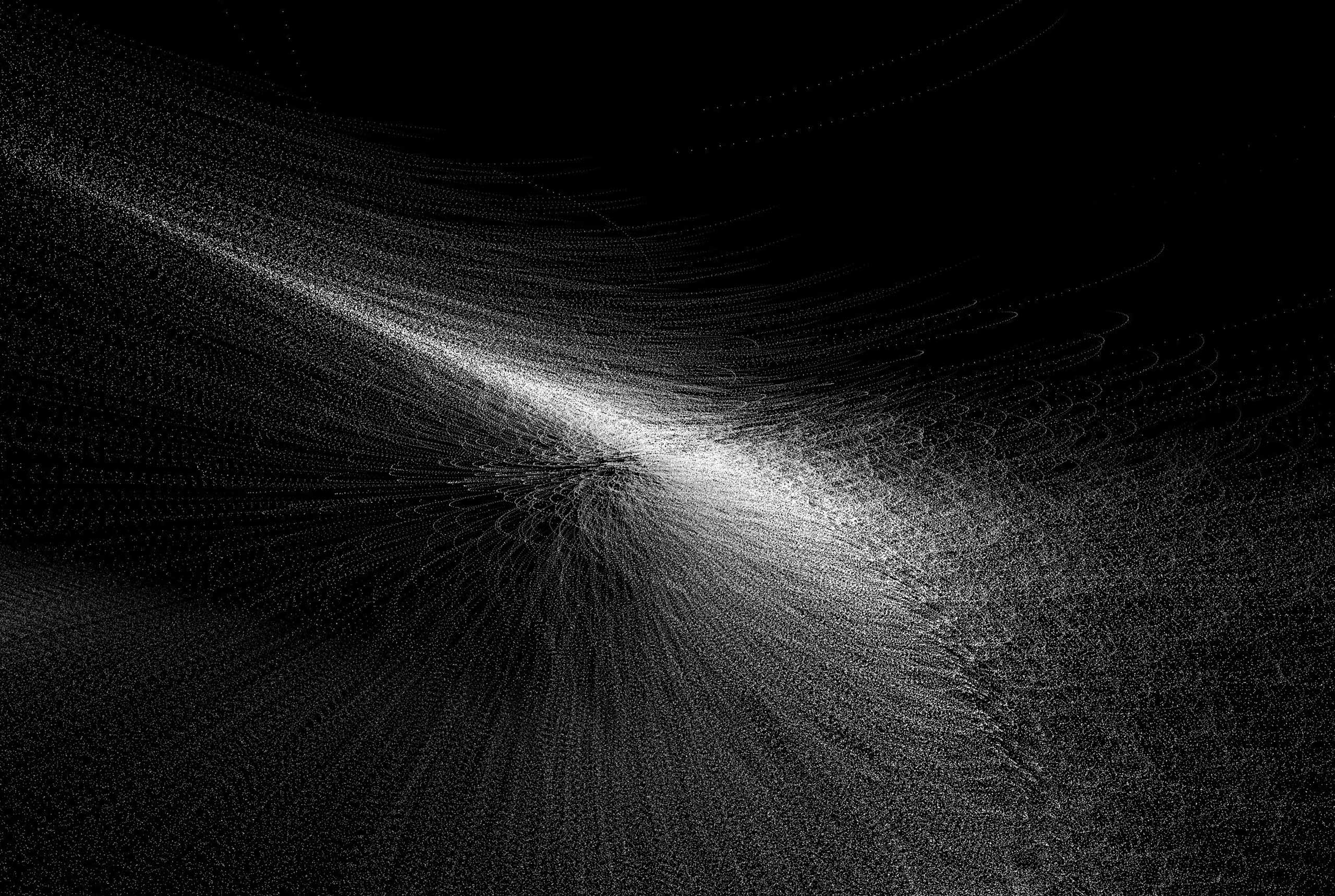
After the performance Ryoji Ikeda took questions and explained what was behind the work. it was refreshing to hear him explain that while certain areas of science and physics were used as reference points, there was no explicit narrative. He also explained that while he composed the performance, it was only complete upon the audiences experiencing it.
While I found the performance to be interesting and and striking, at times it felt slightly laboured. I was surprised to learn after the piece one of my friends had fallen asleep shortly after the its start.
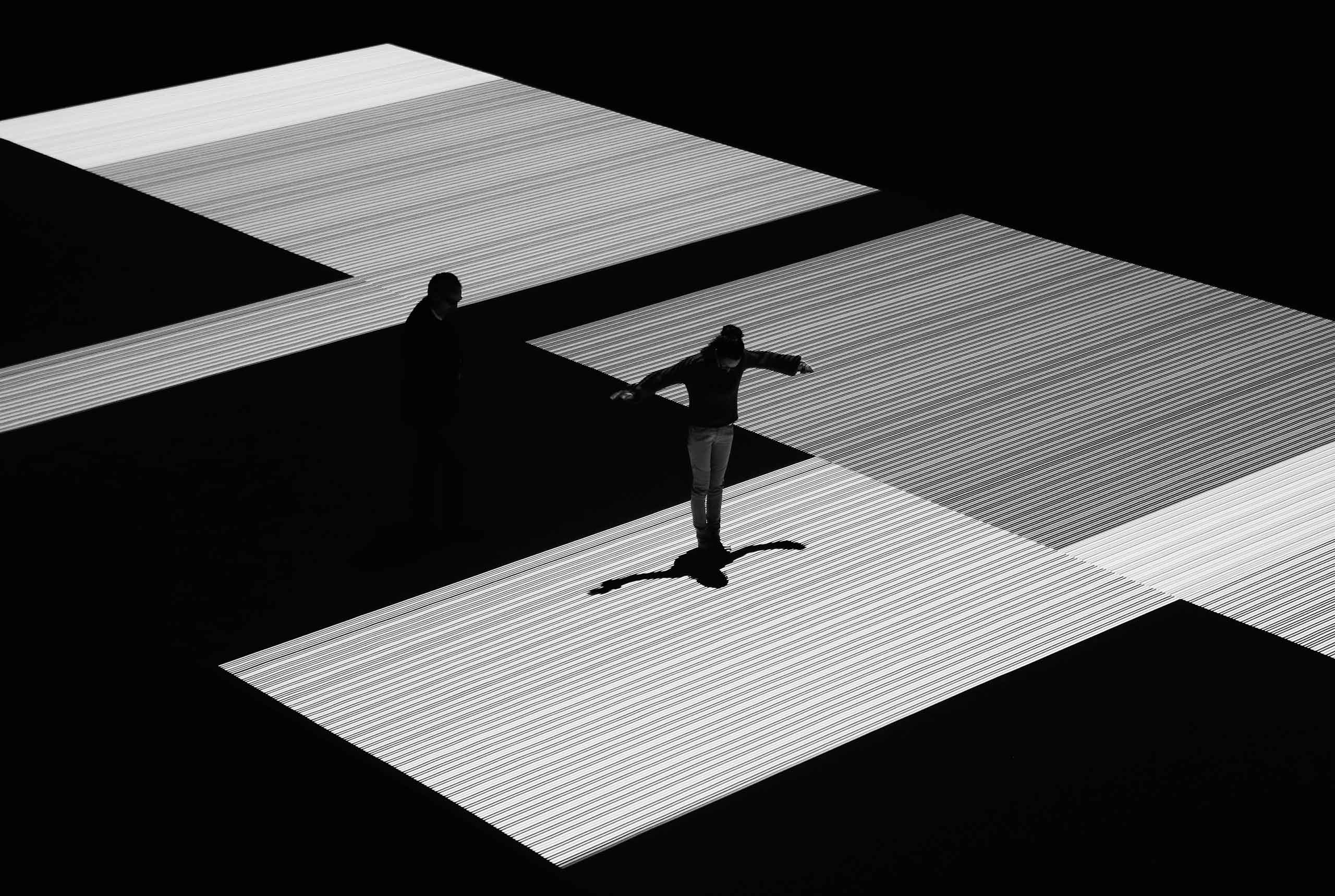
Above and Below: Test Pattern [No 5] © Ryoji Ikeda.
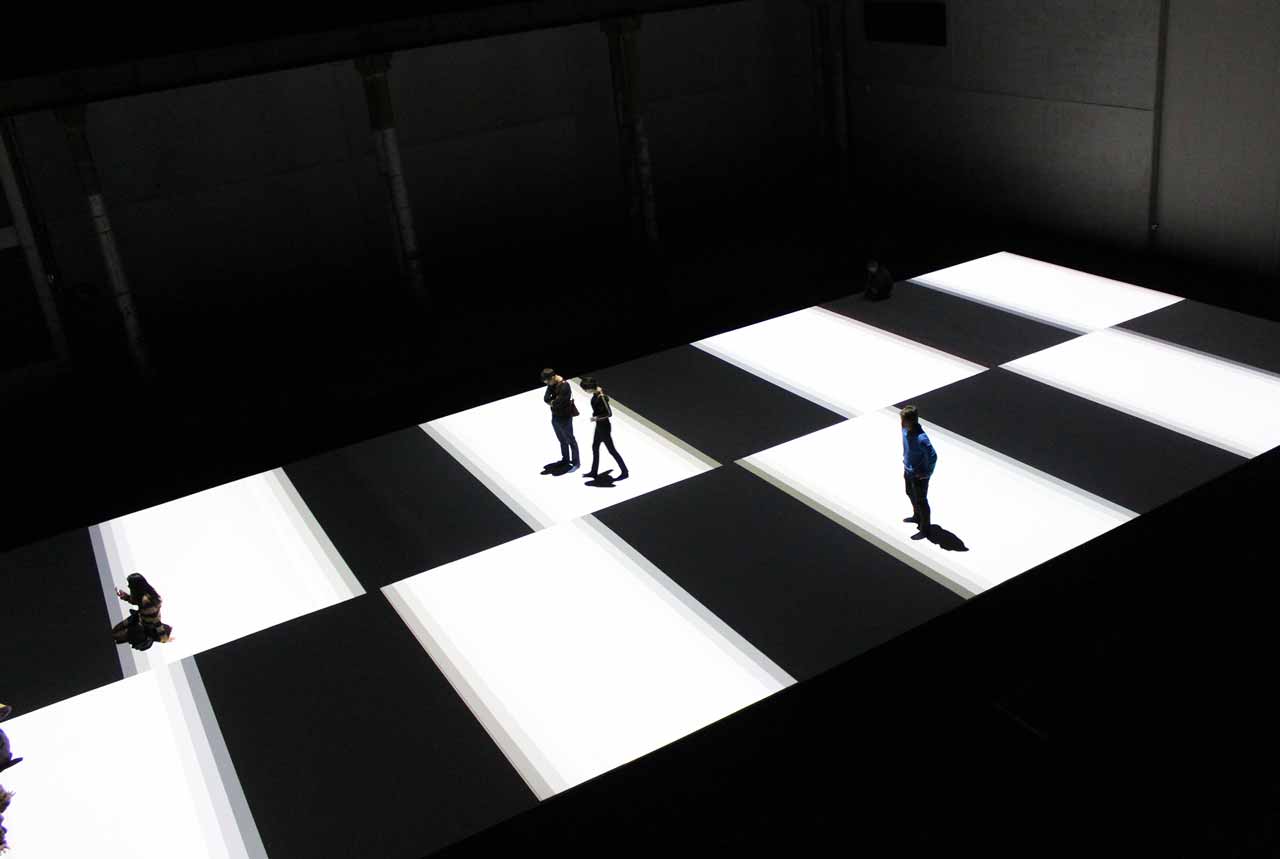

Earlier I had also experienced another of Ryoji Ikeda’s artworks at Carriageworks entitled Test Pattern [no 5]. Using a white light in a black room, barcode-like patterns were projected on to the floor, 30 meters long and 10 metres wide the patterns were constantly changing and in tune with loud, harsh synthetic sounds. The ability to interact and emerse yourself in this work gave it another dimension that was missing in Superposition.
If you get the chance – and you are open to artistic experiences – I would highly recommend experiencing either of these works if you get the chance.
Read more about Superposition here: http://www.ryojiikeda.com/project/superposition/ and here: http://carriageworks.com.au/events/superposition/
Images © Ryoji Ikeda
Filed Under:
Art Culture Japan Japanese Art Performance